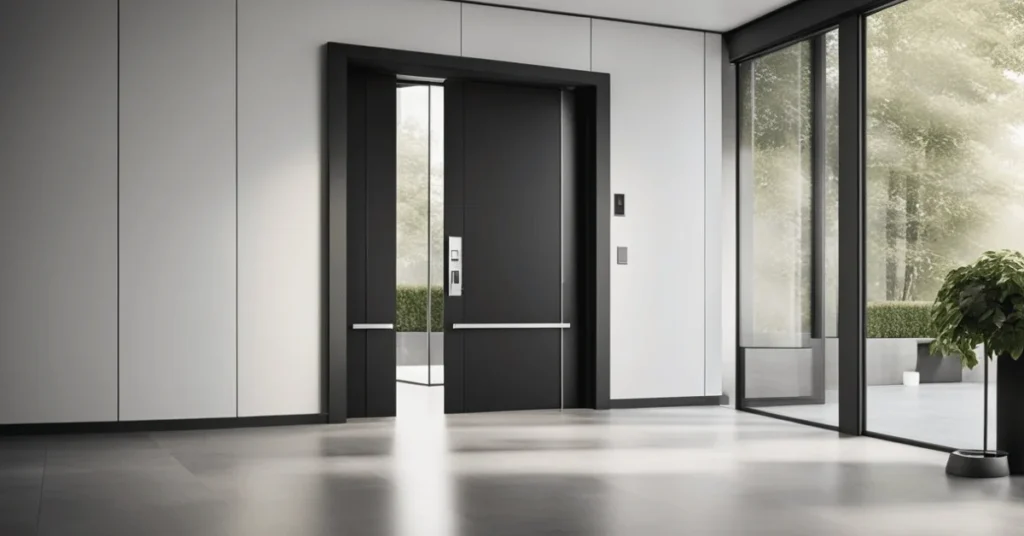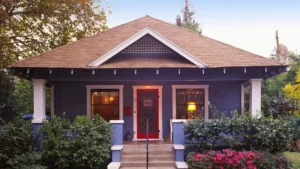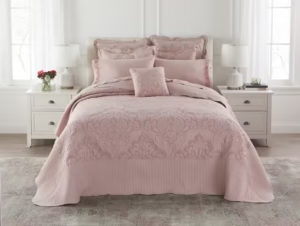Imagine walking into a beautifully renovated home with polished floors, freshly painted walls, and tastefully chosen furniture. Yet, something needs to be corrected. You are drawn to the doorway, where plain, undecorated trim surrounds the door frame. In contrast to the modern decor, the trim looks neglected, a small but noticeable detail that undermines the room’s elegance. Surprisingly, door trim is often overlooked in home design, even though it significantly impacts a room’s overall aesthetic. For a detail that usually seems secondary, door trim can transform a space, adding depth and character and even increasing the value of your home.
Door trim might be a small part of a home’s interior, but it serves a significant purpose: tying together the architecture and decor of each room. Homeowners today are increasingly looking to this design element as an opportunity for customization and style, with searches for “door trim styles” growing by 30% over the past year, according to Google Trends. If you’re considering upgrading or installing new door trim, this guide will walk you through everything you need to know—from trim types to the latest style trends and material options.
Why Door Trim Matters: Small Details with Big Impact
Door trim, or casing, is the decorative framing surrounding a door. Its primary purpose is to cover the gap between the door frame and the wall, but it also acts as a design feature that can enhance a room’s aesthetic. According to the National Association of Realtors (NAR), finishing touches like quality door trim can increase a home’s perceived value. 65% of realtors recommend that sellers invest in minor upgrades like trim and moldings to boost property appeal (NAR Remodeling Impact Report, 2022).
Well-chosen door trim can add architectural interest, making a room look more polished and complete. From traditional styles like Colonial to modern profiles with sleek lines, the proper trim can match or even enhance your interior design. And as more homeowners focus on improving the aesthetic of their homes, demand for high-quality trim is rising. In 2022, the global molding market, including door trim, was valued at around $11 billion, with steady growth expected through 2030 (Market Research Future, 2023).
Types of Door Trim Styles: From Traditional to Modern
Door trim comes in various styles, offering a different look and feel. Here’s a breakdown of some popular options:
- Colonial Trim: This classic style is characterized by simple, symmetrical lines and rounded edges. It is commonly seen in older homes and is often used to create a traditional, timeless look.
- Craftsman Trim: Known for its simplicity and clean lines, Craftsman Trim often has a flat profile with minimal detailing. It’s popular in mid-century and Craftsman-style homes, bringing a rustic but refined aesthetic.
- Modern Trim: Sleek and understated, modern trim usually has a flat or square profile with sharp edges. It’s an excellent choice for contemporary spaces that prioritize simplicity and minimalism.
- Farmhouse Trim: Inspired by the rustic look of traditional farmhouses, this style is usually wider and can include shiplap or beadboard. It adds warmth and character, blending with traditional and modern interiors.
Choosing a style depends on your home’s overall aesthetic and the vibe you want each room to reflect. For example, if you live in a historic home, Colonial or Victorian trim can enhance the home’s charm, whereas Modern trim might feel out of place.
Materials Matter: Choosing the Right Door Trim
The material you choose for door trim is as essential as the style. Each material has pros and cons, particularly in cost, durability, and maintenance. Here are some standard options:
- Wood: A classic choice, wood trim offers a natural, timeless look and can be painted or stained to match any decor. Popular wood options include pine, oak, and poplar. However, wood can be susceptible to warping and may require more maintenance.
- MDF (Medium Density Fiberboard): MDF is a cost-effective alternative to wood, made from compressed wood fibers and resin. It’s easy to paint, resistant to warping, and commonly used in newer homes. However, MDF could be better in areas with high moisture, like bathrooms.
- PVC (Polyvinyl Chloride): PVC trim is water-resistant, perfect for bathrooms or other damp areas. It’s a durable option that resists rotting and insects but can be more expensive than MDF and less environmentally friendly.
- Composite Materials: Composite trims combine wood fibers with synthetic materials for enhanced durability and moisture resistance. They are generally more expensive but offer the look of wood with greater resilience.
Choosing the suitable material depends on your budget and the room’s conditions. For example, you may want something durable like composite or PVC in high-traffic areas. However, traditional wood might be the better aesthetic choice for a living room or bedroom.
Door Trim Dimensions: Finding the Right Proportions
Getting the proportions right for your door trim is essential for a cohesive look. The typical door trim width is around 2 to 3.5 inches, but larger trims can create a dramatic effect. According to the National Woodwork Manufacturing Association, oversized trim (around 4-6 inches wide) trends in modern homes provide a bolder, more striking appearance.
Consider using wider trim to balance the room’s scale if you have high ceilings. Narrow trim may look out of place in a spacious room, while oversized trim can make a small room feel cramped. A good rule of thumb is to choose a width that complements your baseboards to maintain visual harmony throughout the space.
The Power of Paint: Color Trends in Door Trim
While traditional door trims are painted white, bold colors are becoming increasingly popular. Homeowners are experimenting with contrast, painting trim in colors like deep blue, charcoal, or even black to add character. According to a 2022 survey by Houzz, 22% of homeowners remodeling their homes opted for darker or colored trim for a modern, high-contrast look.
If you’re unsure about colored trim, consider starting with a neutral gray or taupe, which can add sophistication without overwhelming the space. Alternatively, painting the trim the same color as the walls, known as “monochromatic trim,” is trending in minimalist designs and can make a room look larger by eliminating visual breaks.
DIY or Hire a Pro? Installing Door Trim
Installing door trim can be a DIY project if you have basic carpentry skills, but it does require precision. An uneven cut or misaligned piece can make the whole trim look sloppy. HomeAdvisor says the average cost for professionally installed door trim is about $150 to $200 per door, though prices vary based on material and labor rates in your area.
For DIY enthusiasts, a few essential tools are required: a miter saw for cutting angles, a level to ensure straight lines, and a nail gun for secure fastening. If you’re unsure about doing it yourself, hiring a professional can save time and provide quality results.
Conclusion: Door Trim as an Investment in Your Home’s Style and Value
Upgrading your door trim may seem like a small detail, but it can significantly impact your home’s style and value. Whether you opt for classic wood or modern composite, Colonial style or sleek Modern trim, this design element can elevate any room, tying your decor together and adding architectural interest. And with home improvement projects at an all-time high, now is the perfect time to give your doorways the attention they deserve.
According to Remodeling Magazine’s Cost vs. Value report, even modest trim and molding upgrades can yield a return on investment of around 70-80% in home resale value. So whether you’re preparing your home for sale or simply want to enhance your living space, adding or upgrading your door trim is a worthwhile investment.
You may also read
Fred Glick Real Estate mortgage






